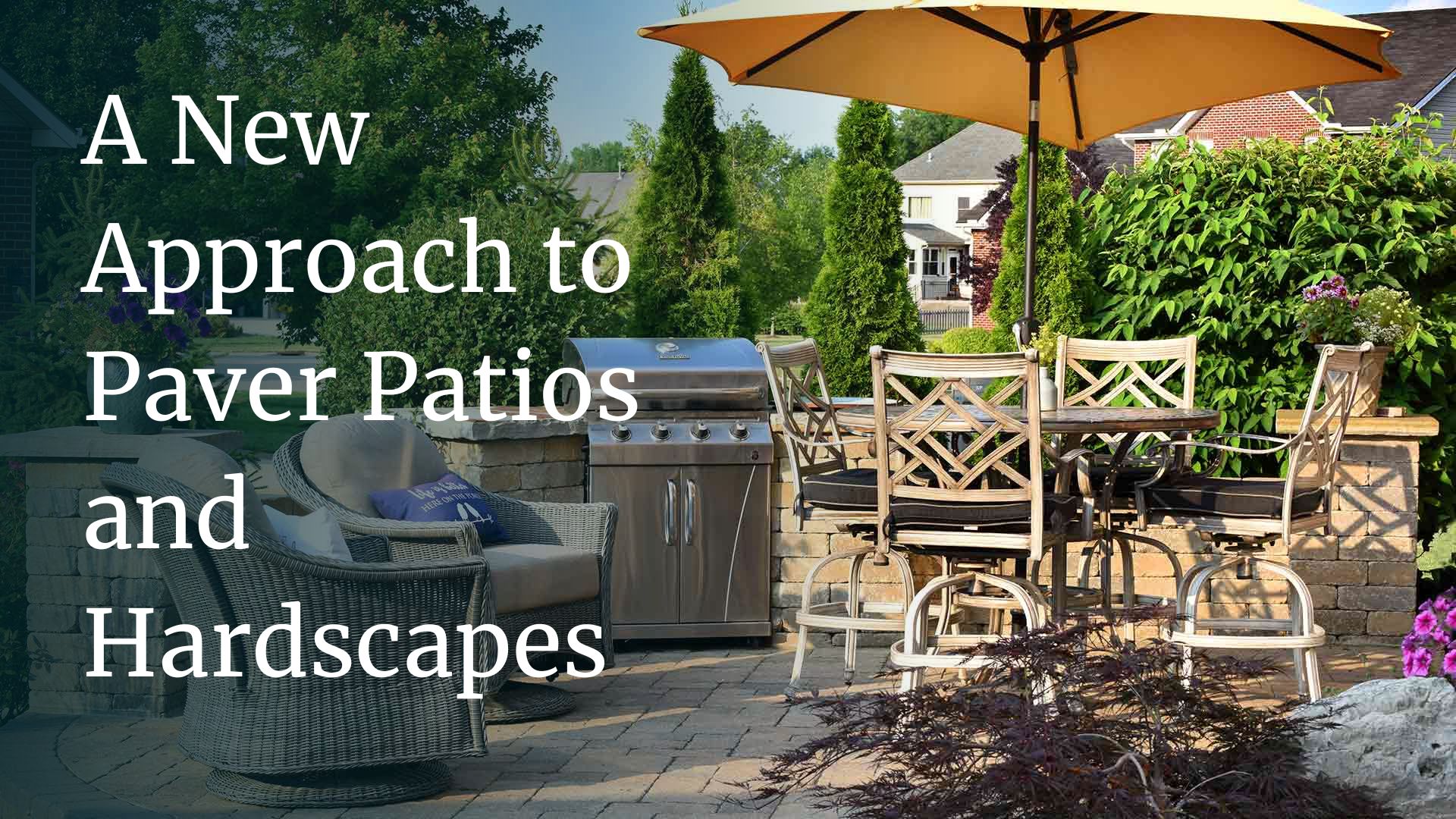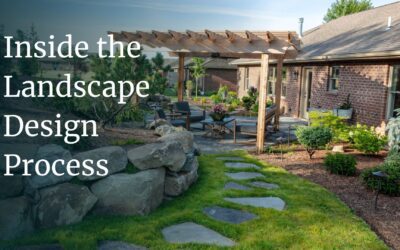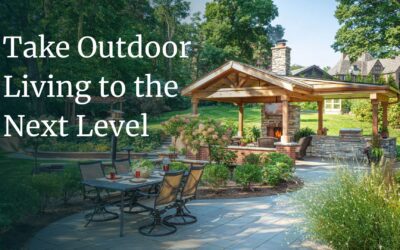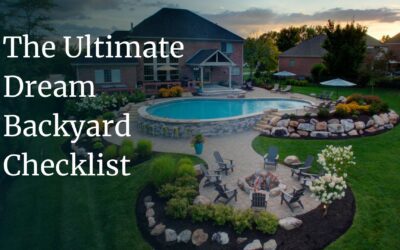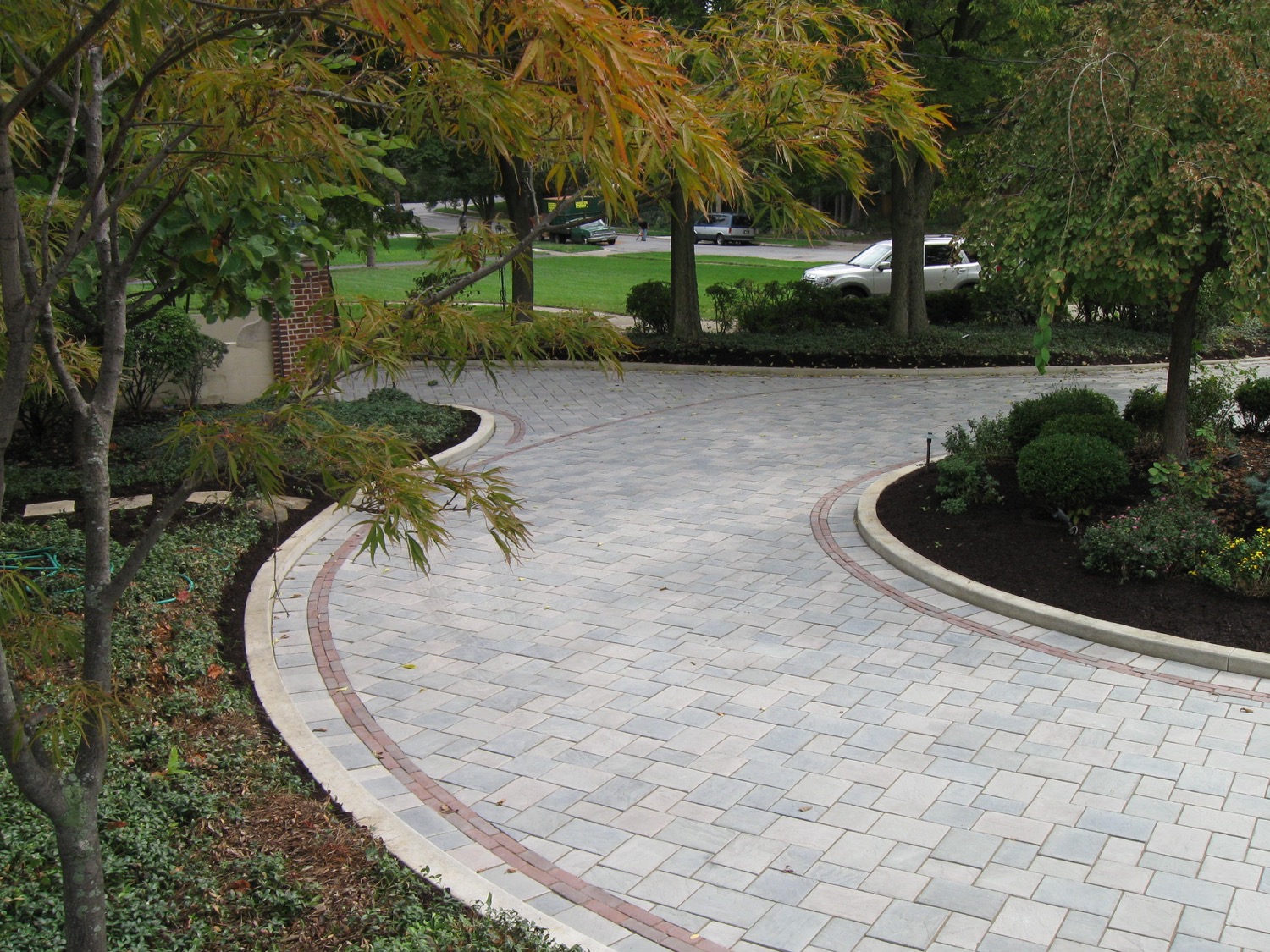 Pick up any design magazine and you’ll no doubt find a section on “what’s new”. We place high value on having something that is not readily available or embraced by the masses. Marketers even recognize a whole class of consumer called early adopters – people who are willing to stand in line for hours, if not days, to be the first to have the latest phone, clothing style, or tablet computer. The “new” bug has rubbed off on nearly all of us – what worked 10 years ago is old news. Some industries, like fashion and technology, are naturally equipped to provide the new, smaller, sleeker, current product. Others, like the landscape and patio industry, are a little slower to adopt new materials, colors, and styles – preferring to see how consumers react to someone else going out on a limb before retooling manufacturing for new products. Henceforth, in the arena of outdoor living, “new” is sometimes a reincarnation of “old” in a fresh style or arrangement.
Pick up any design magazine and you’ll no doubt find a section on “what’s new”. We place high value on having something that is not readily available or embraced by the masses. Marketers even recognize a whole class of consumer called early adopters – people who are willing to stand in line for hours, if not days, to be the first to have the latest phone, clothing style, or tablet computer. The “new” bug has rubbed off on nearly all of us – what worked 10 years ago is old news. Some industries, like fashion and technology, are naturally equipped to provide the new, smaller, sleeker, current product. Others, like the landscape and patio industry, are a little slower to adopt new materials, colors, and styles – preferring to see how consumers react to someone else going out on a limb before retooling manufacturing for new products. Henceforth, in the arena of outdoor living, “new” is sometimes a reincarnation of “old” in a fresh style or arrangement.
Paver patios, for instance. One refrain I hear frequently is “I don’t like pavers”. After some questioning, I find that the real concern is either “I don’t want my patio to look like everyone else’s” or “I’ve had a bad experience with a previous paver patio”. Many times the first concern can be eliminated with a glance through a current catalog. There are many shapes and styles available, not to mention textures, laying patterns, and combinations of products that can give a new look. Pavers, by definition, are units that cover a road or path – the word means a lot more than a chunk of concrete that is 4”x8”, laid in running bond or herringbone pattern. Some newer shapes duplicate stone – both irregular shaped and square cut – quite convincingly. The second issue can usually be overcome by sharing the industry standards that have been developed for base compaction, sand stability, and manufacturing tolerances. All of these ensure a paver patio that won’t get humpy or move around if installed properly.
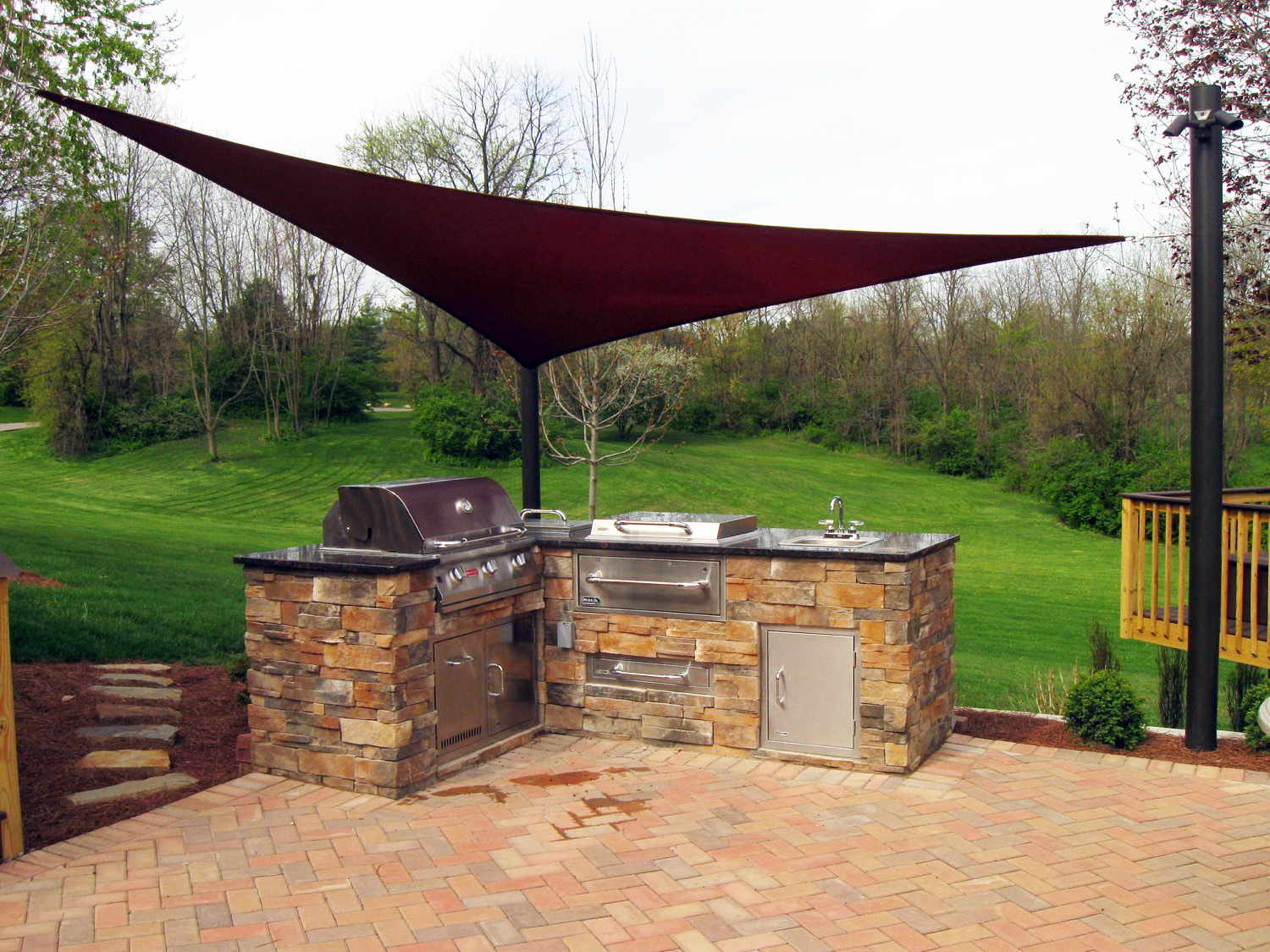 Lets consider why paver patios are so popular. They have been around basically forever – think of cobblestone streets in ancient Europe or colonial America. The concept of individual units interlocking to support weight is age-old. More recently the Dutch helped develop our current version, which was brought to the States in the early 1970’s. The basic concept of the paver hasn’t changed much over the years, but differing thickness of base gravel is used for various applications: holding up industrial machinery, supporting cars and trucks, and withstanding light foot traffic. One real benefit of a paver installation, especially here in Ohio, is its ability to gently flex with our winter freeze/thaw cycles without separating or cracking. Manufacturing strengths of 6-7000 psi (compared with the average concrete slab at 3500 psi) assure a dense surface that won’t shatter with winter icing. Pavers are not mortared together as a continuous unit, so they can be lifted up and reset, rather than having to be torn out and completely redone if settling occurs. After years of development, the “paver” installation system has been proven to be very beneficial, especially in colder climates.
Lets consider why paver patios are so popular. They have been around basically forever – think of cobblestone streets in ancient Europe or colonial America. The concept of individual units interlocking to support weight is age-old. More recently the Dutch helped develop our current version, which was brought to the States in the early 1970’s. The basic concept of the paver hasn’t changed much over the years, but differing thickness of base gravel is used for various applications: holding up industrial machinery, supporting cars and trucks, and withstanding light foot traffic. One real benefit of a paver installation, especially here in Ohio, is its ability to gently flex with our winter freeze/thaw cycles without separating or cracking. Manufacturing strengths of 6-7000 psi (compared with the average concrete slab at 3500 psi) assure a dense surface that won’t shatter with winter icing. Pavers are not mortared together as a continuous unit, so they can be lifted up and reset, rather than having to be torn out and completely redone if settling occurs. After years of development, the “paver” installation system has been proven to be very beneficial, especially in colder climates.
On to the fun stuff: what’s it look like? As paver manufacturers expand their offerings to duplicate more and more natural materials, the price benefit when compared to the actual natural material gets less and less. In other words, you can probably have the real thing for about the same price as the imitation material. You do need to know a few things to be a careful consumer – some types of sandstone, for example, are soft and won’t hold up very long, so you might want to consider the same look in a man-made product. However, classic materials like flagstone, bluestone, and travertine have been used successfully for years, withstanding our winter pressures. Advances in mining and stone cutting allow many of these stones to be machined to uniform thicknesses and dimension, making installation quicker as well. Homeowners now have the option of a timeless look with the reduced-maintenance benefit of a compacted gravel sub base – the “paver” installation process. Other advantages of natural material include minimal fading and a look that doesn’t go out of style. From modern to country to classic, there is a natural stone that will fit the setting and won’t need to be replaced anytime soon.
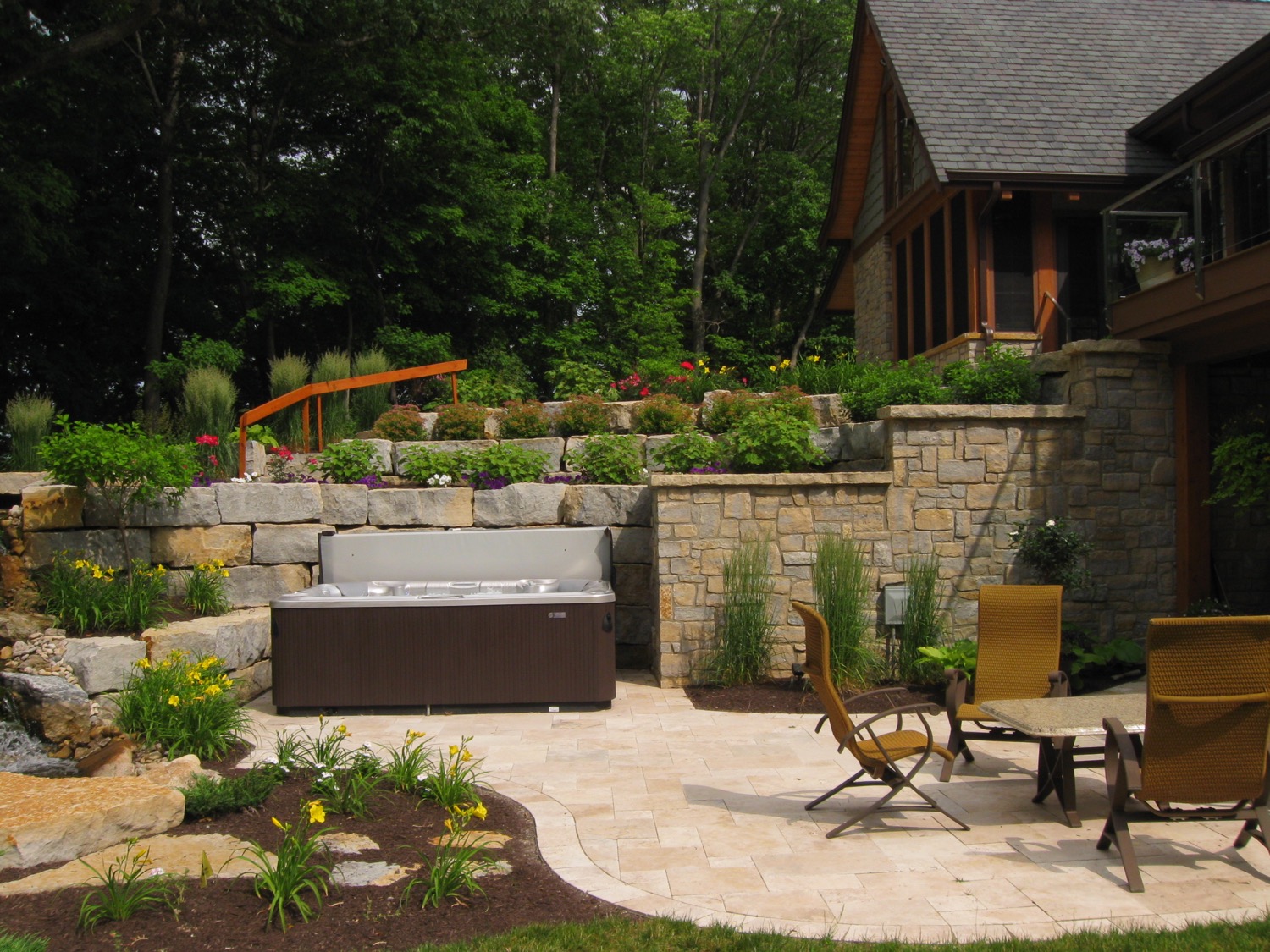 Natural stone mining and machining processes have also opened a wider range of materials to the market. In addition to natural products that have a relatively smooth “natural cleft” surface, stone that formerly was too rough for a patio is being smooth milled so your chair won’t rock around. One piece of advice: get a sample of the material being used and carefully consider whether it suits your needs. A rough stone has a great natural look that might be suitable for use as stepping stones, an occasionally used patio, or a bench pad, but too bumpy for furniture or guests in formal heels. Although many of our local limestones are too rough for a patio, a stone trucked in from a neighboring state will give you a more usable surface and probably be worth the additional investment.
Natural stone mining and machining processes have also opened a wider range of materials to the market. In addition to natural products that have a relatively smooth “natural cleft” surface, stone that formerly was too rough for a patio is being smooth milled so your chair won’t rock around. One piece of advice: get a sample of the material being used and carefully consider whether it suits your needs. A rough stone has a great natural look that might be suitable for use as stepping stones, an occasionally used patio, or a bench pad, but too bumpy for furniture or guests in formal heels. Although many of our local limestones are too rough for a patio, a stone trucked in from a neighboring state will give you a more usable surface and probably be worth the additional investment.
We’re probably not going to change our appetite for the new, especially as technology and fashion re-invents itself every 6 months. But when it comes to your patio: take another look at the classic materials – they may be available in a fresh look and fit into your budget better than imagined.
Interested in a free consultation – click here.

